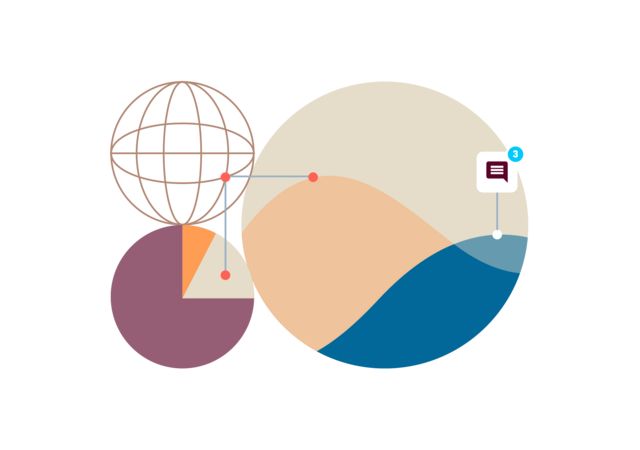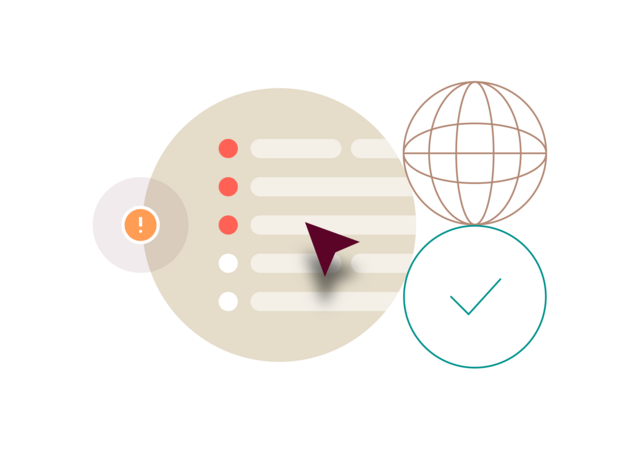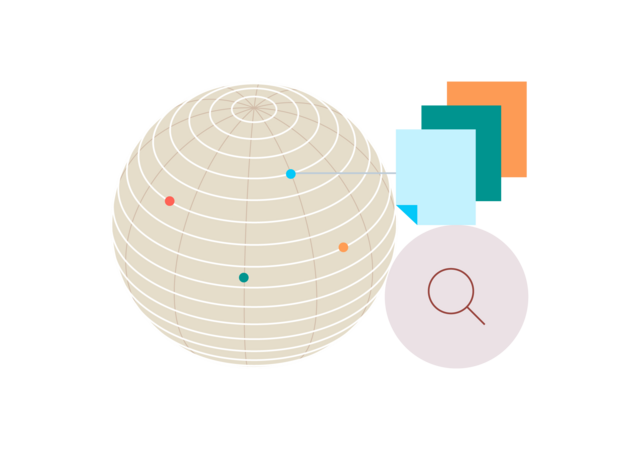UL Solutions welcomes our valued WERCS Studio customers to the on-demand version of the 2023 Virtual User Group.
During these valuable sessions, the WERCS Studio team will be taking you through key software and regulatory topics to help you maximize your software investment and manage your regulatory compliance obligations.
Topics included
Key updates to WERCS Studio software and regulatory content
Presenters
Desiree Sparella and Allison Brooks
GHS Updates for Asia Pacific and Latin America
Presenters
Darlene Susa-Anderson and Raissa Havens
Resource links
GHS updates for Asia Pacific and Latin America
- Asia Pacific
Japan
Japan Ministry of Health, Labor and Welfare (MHLW)
Japan Ministry of Economy, Trade and Industry (METI)
Japan Ministry of the Environment (MoE)
Japan SafeNite
Japan J-Check
Japan UL Solutions articleGreater China Region
Regulation for the Labelling and Hazard Communication of Hazardous Materials (Chinese)
Taiwan published GHS classifications (Chinese)
Ministry of Labor (MOL formerly Council of Labor Affairs (CLA))
UL Solutions article: Taiwan amends regulations for labeling and SDS
Regulation on the Safe Management of Dangerous Chemicals (Decree No. 591) (Chinese)
People’s Republic of China draft revision to GB 15258-2009 (Chinese)
GB 16483-2008 (Chinese)
Notice of public solicitation of comments for 12 mandatory national standards including the Rules for Classification and Labeling of Chemicals (GB 30000.1 and GB 30000.30) (Chinese)
UL Solutions article: China Drafts Administrative Rules for Hazardous Chemicals
UL Solutions article: China Plans to Revise GHS Labelling Standard GB 15258-2009Malaysia
Malaysia DOSH Notice of Proposed Amendments to CLASS
Malaysia Occupational Safety and Health (Classification, Labelling and Safety Data Sheet of Hazardous Chemicals) Regulations 2013
Malaysia Industry Code of Practice
Malaysia UL Solutions article: Malaysia moves to adopt GHS Revision 8New Zealand
Hazardous Substances (Hazard Classification) Notice 2020
New Zealand GHS update portal
New Zealand User Guide to Thresholds and Classification under the HSNO Act
HSNO Chemical Classification Database (CCID)Singapore
Singapore Standards
SS 586 series of standards
Safety and Health (ACOP) Notification 2022
UL Solutions article: Singapore Adopts GHS 7th Edition into its Labelling and SDSs- Latin America
Brazil
Bill 6120/2019 – Inventory
NR-26 and Edict 2770 of September 5, 2022
ABNT NBR 14725:2023 (available for purchase)Peru
Decree No. 1570 of May 28th, 2023 – GHS adoption and inventoryColombia
Decree 1496 of August 6, 2018 - GHS Rev. 6
Resolution 0773 of April 7, 2021 - GHS in workplace
Decree 1630 of 30 November of 2021
Circular 018 of May 31, 2022Chile
Decree 57 of February 2019 - GHS Rev. 7 Implementation
Resolution 777 of August 23, 2021 - Approves the Official List of Substance Classification
Decree 60 of August 17, 2022 - Hazard Substances Storage Regulation
Decree 594 of September 15, 1999 - OELs
Resolution 15 of January 11, 2023 - List of Dangerous Substances Subject to Import Process
Clarification Document of S.D. 57/2019 vs. 594/1999
Updates to chemical regulations: Summary of updates in transport regulations
Presenters
Kevin Skerrett and Marjorie Fournier
Recent Classification, Labelling and Packaging (CLP) amendments: New hazard classes and other updates
Presenter
Dr. Martina Schneider
E.U. Poison Centre Notifications (PCN): Regulatory background, updates and changes to PCN solution
Presenter
Christine Lepisto
Toxic Substances Control Act (TSCA) - A busy year ahead with three new reporting rules
Presenters
John Kowalski and Cora Knutson
Navigating the dynamic PFAS regulatory environment
Presenter
Kystal Spickler
PFAS content package software demonstration
Presenter
Frank Schroeder
Resource links
- PFAS
Government of Canada. (2023). Draft state of per- and polyfluoroalkyl substances (PFAS) report - Canada
Government of Canada. (2023). Prohibition of Certain Toxic Substances Regulation - Canada
Government of Canada. (2022). Information gathering under CEPA section 71 - Canada
United States Environmental Protection Agency. (2022). TSCA Section 8(a)(7) Reporting and Recordkeeping Requirements for Perfluoroalkyl and Polyfluoroalkyl Substances | US EPA
United States Environmental Protection Agency. (2023). Proposed Designation of Perfluorooctanoic Acid (PFOA) and Perfluorooctanesulfonic Acid (PFOS) as CERCLA Hazardous Substances | US EPA
UL Solutions. (2023). Additional U.S. States Ban PFAS-Containing Products | UL Solutions
European Chemicals Agency. (2023). Proposed EU PFAS Restriction - ECHA
Best practices, tips and tricks and the importance of keeping updated on WERCS Studio content and releases
Presenter
Christine Lepisto
Questions and Answers
I know this presentation was on GHS updates for the Asia Pacific region but what is happening in the U.S.?
OSHA sent the proposed rule to OMB on October 11, 2023. The expectation is that the final rule will be released in January 2024 but subject to change. Stay tuned!
You didn’t mention anything about GHS Updates for India? What’s going on there?
There was nothing concrete to report. India is in its at least 5th draft of Chemical Management Regulations and content has changed dramatically between drafts. Word on the street is second half of 2024 but we have heard target dates before.
You mentioned the option of having a QR code on the label of the chemical product. Would that eliminate the need of providing the physical Safety Data Sheet?
The physical SDS would still be required since there is a possibility of lack of internet access or an individual not having a phone to be able to get access to the SDS.
What testing will be needed to identify endocrine disruptors?
The CLP Regulation does not set information requirements or require testing of substances and mixtures for classification purposes. Under CLP, no further studies can be requested. We do expect more information on your question based on the revised CLP guidance. The current draft document refers also to the OECD ‘Guidance document on standardized test guidelines for evaluating chemicals for endocrine disruption’, OECD GD 150, which provides guidance on the interpretation of effects measured in relevant OECD test guidelines and other standardized test methods.
Does the PFAS reporting rule require companies to conduct testing?
No, but, you must use all information known to or reasonably ascertainable by you to determine if you manufactured or imported a PFAS. For example, if you imported a type of product known to sometimes contain PFAS, this could include reviewing purchase records, Safety Data Sheets or product data sheets or contacting your supplier.
Any insight into how PFAS will be measured or in scope for purposes of regulation by the U.S. states?
Many of the states have included verbiage to address 'intentionally added' PFAS. Where that is the case, intentionally added is generally also defined. Typically, this equates to addition of a PFAS chemical to a material or product to achieve a desired technical effect. However, some states like California have also set guidelines for the concentration of PFAS. For example, the laws are targeted at PFAS intentionally added OR present in a product or product component at or above 100 ppm, measured by total organic fluorine.
Is there any indication of what products may be in scope of potential future PFAS regulation in Canada or the U.S.?
The draft state of PFAS report did not provide much indication as to which categories could be subject to future action. Largely, the upcoming survey will likely be used to highlight where use is most prevalent and will be reviewed to determine the best next steps. Much of the current state action has revolved around the key categories covered earlier in the presentation, but there are some categories that only one or two states have passed or proposed bills to address. Some examples of these are architectural coatings, artificial turf, dental floss, and anti-fogging sprays or wipes. Washington State just announced a cycle 1.5 to address PFAS further under their Safer Products Program, and one standout category noticed was hard surface sealants.
Can you please clarify the exemption for chemicals in imported articles?
First of all chemical substances in imported articles are not exempt under the TSCA Asbestos reporting rule or the PFAS reporting rule. Under the CDR rule, a chemical substance imported solely as part of an article is exempt, provided that the intended use of the article will not result in the release of the substance. For example, a pen is considered to be an article. But, the ink in the pen isn’t considered to be part of the article because it’s intended to be released when the pen is used. Therefore, the chemicals in the ink are subject to reporting.
Could you please clarify whether obtaining a lithium battery, GB 31241 China Compulsory Certification (CCC), will allow one to obtain a Certification for Safe Transport of Chemical Goods (CSTCG) also?
No, while the CCC is closely aligned with the UN 38.3 test requirements, to obtain a Certification for Safe Transport of Chemical Goods (CSTCG) a 1.2 m drop and 3 m stacking test, in addition to the UN 38.3 tests are required. Obtaining CCC Certification only is not sufficient and will not allow one to obtain a CSTCG in China, additional testing would be required.
Do the changes presented in the U.N. Model 23rd Edition automatically get incorporated into the various, global transport regulations?
No, each transport regulation has a team of experts that reviews the changes presented in the U.N. Model regulation and determines whether to adopt and implement any of the U.N. Model changes in their respective transport regulations. This includes adapting the U.N. Model regulations, as needed, to apply to the modes that they cover.
Get connected with our sales team
Thanks for your interest in our products and services. Let's collect some information so we can connect you with the right person.





